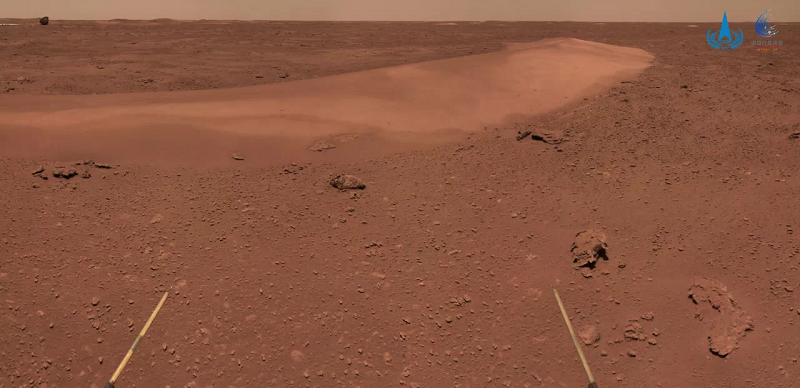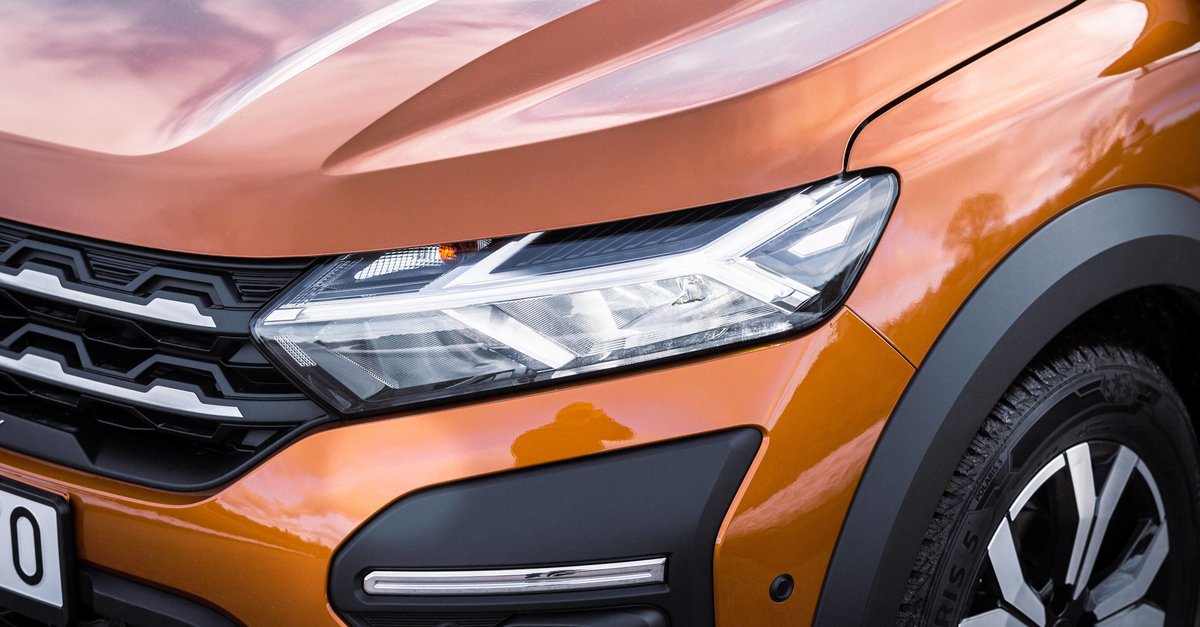Rover Zhurong takes photos of landing components
Dunes can be found again and again in the stone desert of Mars. (Image: CNSA)
The parachute and the back cover of the lander were the focus of the new images. But interesting stone formations were also part of it. In addition, there are satellite images from both the NASA and the CNSA probe.
The Chinese vehicle is now in use for 63 days on Mars and has covered 510 meters. Zhurong delivers daily images with his navigation and topography cameras (NaTeCam). The Chinese space agency CNSA now has more released, reports Universe Today. Among other things, you can see rocks that he has also scanned with other instruments. Further motifs are the parachute and the thrown flashback. The CNSA publishes additional images of the Tianwen-1 probe in Mars orbit, which also recorded the landing site – albeit on a completely different scale.
Zhurong is on his way to this dune to make more detailed investigations. (Image: CNSA)
Contents
Instruments check light spectra and chemistry
The CNSA names the Mars Surface Compoud Detector (MarsCosDe) and the multispectral camera MSCam as scientific instruments that check the motifs. MSCam can record all light spectra between 480 nanometers and 1000 nanometers, i.e. between blue and red. The MarsCosDe works with laser-induced plasma spectrography and an infrared spectrometer to track down the chemical composition of the surfaces. Other instruments monitor the climate (Mars Climate Station – MCS), the magnetic field (Mars Rover Magnetometer – RoMAG) and the structure below the surface using radar (Mars Rover Penetrating Radar – RoPeR).
Photo gallery around the rover
The rover is on its way to a dune to investigate more closely. On the way he passed his landing parachute. Next to it is the discarded back cover, which protected the sensitive instruments from heat when they were flying through the Martian atmosphere. Before the actual landing, the landing platform ejected the parts and used engines to touch down as gently as possible. The last pictures are from a drive around a dune, another firmly in view. There Zhurong is supposed to inspect the area more closely.
Landing area also interesting for NASA
Parallel to the CNSA publications showing the landing site, NASA has now also released images from its probe. The Mars Reconnaissance Orbiter (MRO) shows differences in color that were caused by dust churning up during landing. The rover’s lane and he himself are also colored bluish.



